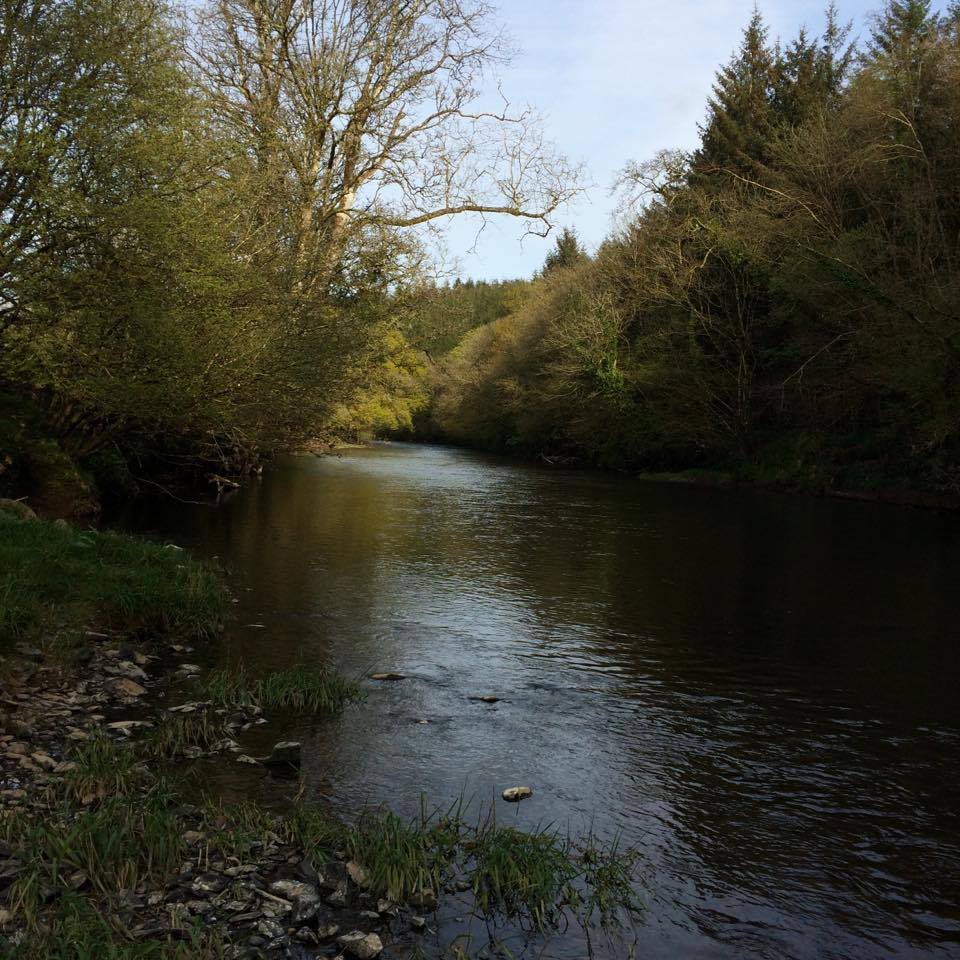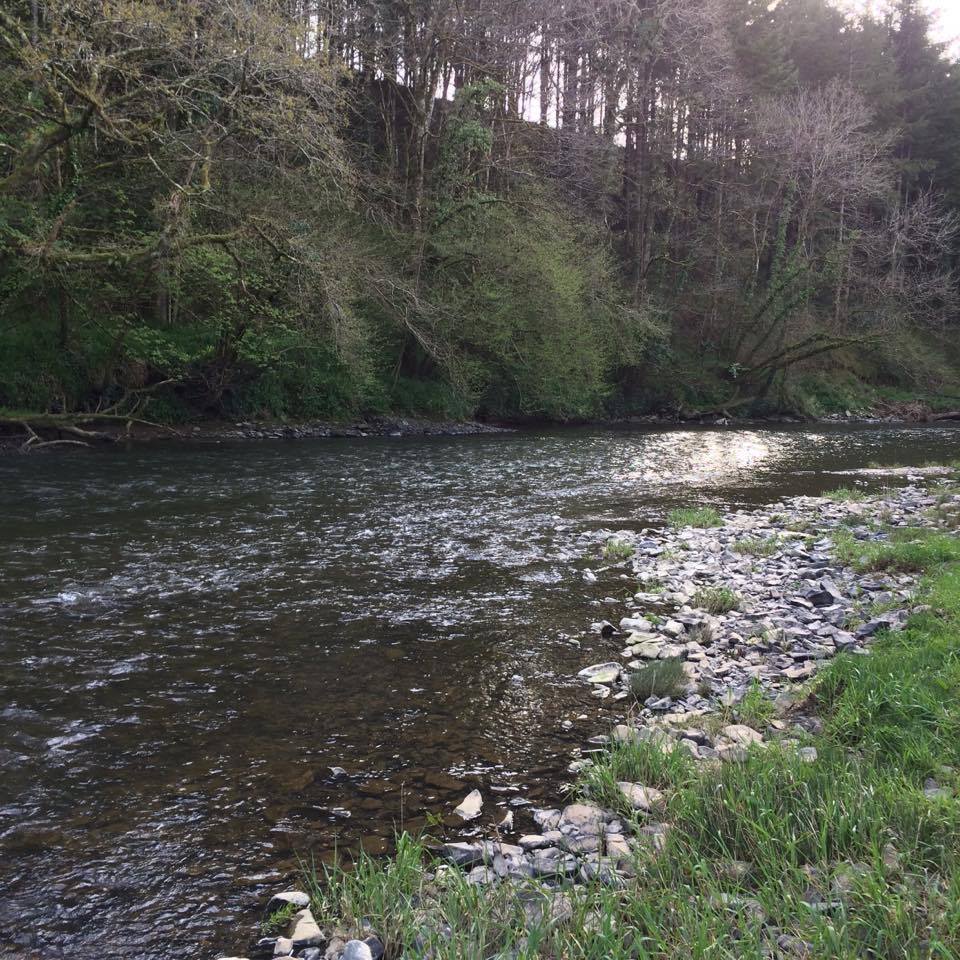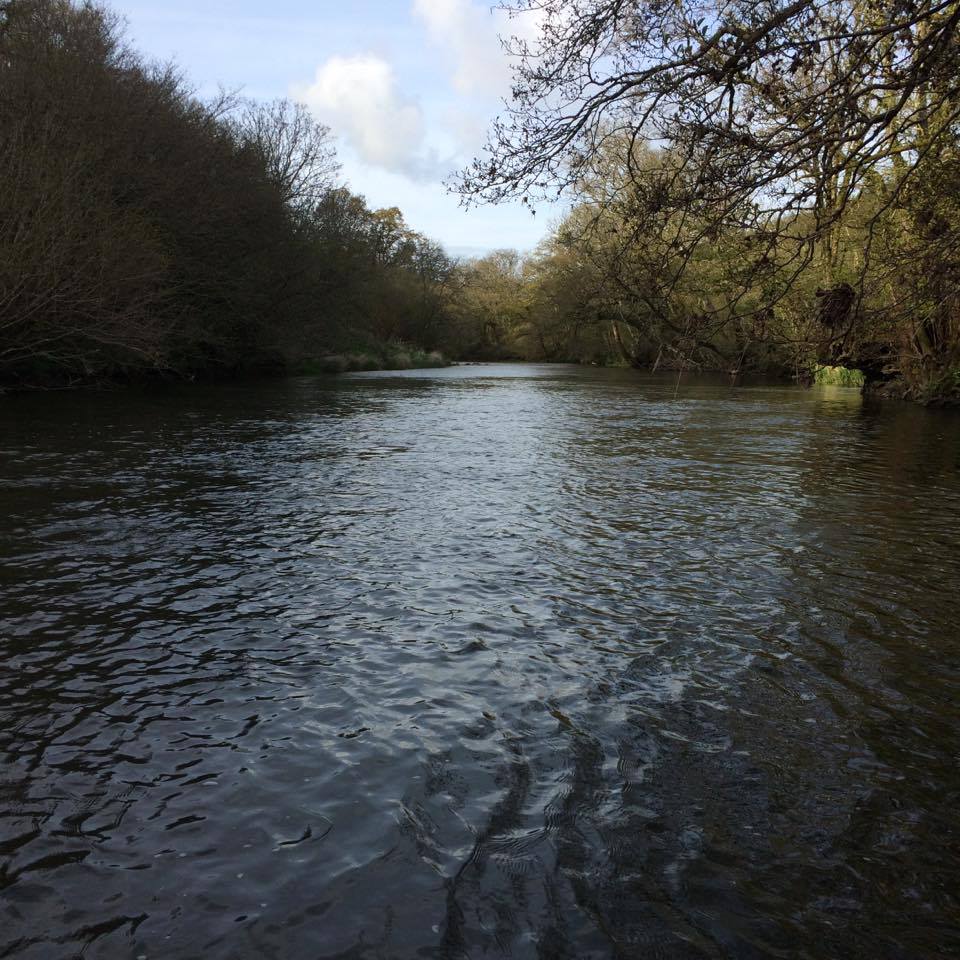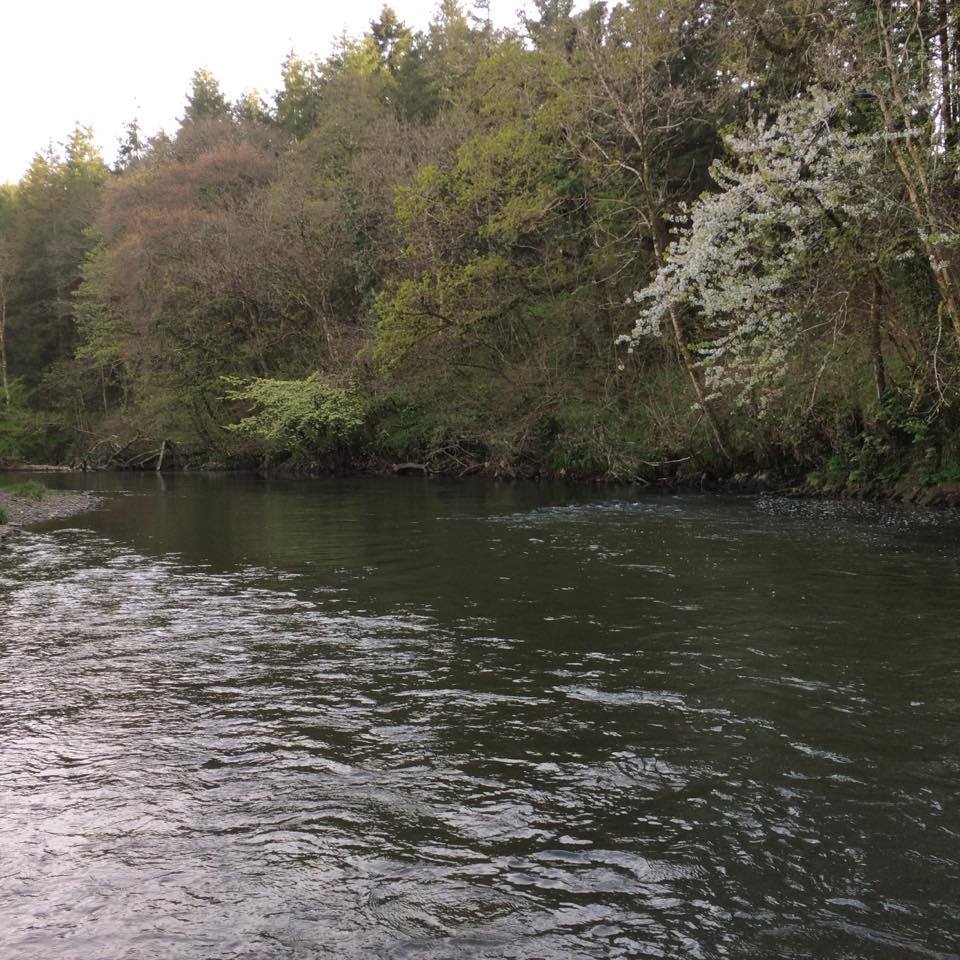After several weeks without substantial rain the rivers have started to drop away. I fished the Middle Torridge on Saturday and was pleasantly surprised at how well the river level has held up with it at a height that I would expect fish to be present. I fished the lies carefully and failed to move any fish. It was as always a delight to in the river with fresh green growth sprouting forth all around and birdsong filling the cool spring air.
Spring tides over the previous week should have encouraged a few fish into the river. Sea trout will start to show soon with every chance of double figure fish in the early season. Ideally we need some heavy rain within a couple of weeks to replenish the rivers. If the rain does not come it will be well worthwhile targetting the wild brown trout that populate our local rivers. Early season fishing sees the fish rising freely to bushy dry flies ideally fished in conjunction with a small beaded nymph in the so called New Zealand Style.
I received this report from Barnstaple & District Angling Clubs John Webber
“Just received details from Taw Cottage Beat. Owner John Saunders invited local angler Bob Lewington to fish his top beat on Good Friday afternoon, resulting in a fresh run 12lb salmon.Bob was wading in deep water with high bank when fish hooked and managed to net whilst still in the water. This was Bob’s his first catch of the season, which I understand brings total fish landed on the Taw to 14.”
———-
The day ticket Brightly and Weir Marsh Beats of the Taw have produced a fine couple of spring salmon with Andy Nixon catching a fine 10lb salmon and Len Francis one of 10lb 8oz. Day tickets can be obtained from Ivan Huxtable on 0777 9214909 or by calling in to The Rising Sun at Umberleigh where they also have fishing available. Click on the link below.
 Below are a few notes from Roger Furniss relating to smolt survival. These highlight the range of problems that impact upon the smolt as they journey to the sea sea. Without smolt of course we have no salmon.
Below are a few notes from Roger Furniss relating to smolt survival. These highlight the range of problems that impact upon the smolt as they journey to the sea sea. Without smolt of course we have no salmon.
SWRA Council Meeting – 11 April 2017 Paper 5
From Headwater to Headland – Improving smolt survival in rivers and estuaries
From Roger Furniss
Introduction
I attended a two-day conference in Berwick with the above title, organised by Atlantic Salmon Trust and Tweed Foundation – Programme attached. The Proceedings will be published but there was so much information relevant to how we manage our rivers I have summarised the key points below.
At the end I draw some conclusions about how we should manage our rivers in the light of the information
Freshwater Influence on Smolt Production and Survival
- Increasing freshwater temperatures are causing average smolt age and size to decrease (1+ smolts average 10 cm, 2+ average 13 cm on Burrishoole);
- Smaller smolts have lower marine survival;
- Smaller 1+ smolts tend to produce MSW’s, larger 2+ tend to produce grilse;
- Smolts have a narrow ‘window’ when they are in right condition to go to sea;
- Run timing is getting earlier (temperature effect) and causing mismatch betweenfreshwater and sea conditions, especially temperature, with cold springs better (sea temperatures do not rise as quickly as freshwater) – earlier migration is correlated with lower marine survival – effect is worse in rivers with short/no estuaries;
- Pesticides, herbicides, etc adversely impact home river imprinting, ability to cope with change to sea water;
- Smolt survival in freshwater and transit time down river and through estuary inversely proportional to river flow;
- Most smolts transit estuary on ebb tide, irrespective of time of day;
- Small loss of scales OK, large loss bad;
- Managing freshwater phase critical to marine survival;
- Hatchery reared fish have poorer survival;
- Wetted area of juvenile habitat vital; Smolt Migration in Rivers
- Environmental change is happening faster than evolutionary adaptation and may be different on different rivers;;
- Rivers with impoundments and in-stream structures have higher smolt mortalities than rivers without;
- R Bush salmon run 1975 – 1995 averaged 30,000 pa, reduced to 5,000 pa by early 2000’s. Now back to 30,000;
- Factors affecting Bush were siltation of redds exacerbated by weed growth, lower marine survival and predation;
- Inland movement of cormorants (increased numbers on coast and less inshore fish) killed 600-1200 smolts a day, totalling 50% of smolt run;
1
- Cormorant shooting/scaring must start early in the run and early in the day – break the habit;
- Cormorant control biggest single factor producing better adult runs – also gulls on weirs;
- Most smolts leave freshwater in the dark;
- Allier (Loire) smolts travel average of 32 km/day, with early migration ‘passive’ – ifnot rapid enough smolts killed by high temperatures and missing the ‘window’;
- Impacts of hydro schemes can be direct (shear, pressure and mechanical injury inturbine) and indirect (delay and easier predation) – latter exacerbated by cumulative
impacts;
- Bindon (Frome) hydro (unscreened Archimedes) with parallel river route showed nodifference in smolt survival, speed of travel, or marine survival of smolts passing down turbine and smolts passing down river.
Smolt survival in the lower river, estuary and coastal waters
- Norwegian sea trout from 100’s of streams fall into only four genetic groups, ie individual river stocks are not separate;
- High flows increase the proportion of daylight smolt migrants;
- Low flow sea trout smolt losses in freshwater can be as high as 50% and kelt 30%,normal flows 20% smolts and 5% kelts;
- Model smolt production by classifying habitat (0 unsuitable – 4 very good) andestimating proportion of catchment in each class; survey juveniles in each habitat and
model survival to smolt;
- Deveron – 40% smolt loss between headwaters (80km upstream) and estuary, mainlypredation by sawbills and large trout – loss of 0.77%/km, 18 days average travel time
– faster smolts more successful;
- Dee smolts move out of harbour very quickly (average 1 mile in 40 minutes);
- 26 % in-river smolt mortality (0.78%/km cf Deveron);
- In-river migration speed flow related;
- In Moray Firth smolts ‘wander’ in daytime (?feeding?) and go in straight lines at night(?active migration?)
- Moray Firth smolts trapped 70km above tide, 50% loss in freshwater;
- Salmon smolts move away from river mouths more quickly that sea trout;Impact of Predation
- In Denmark recent changes in cormorant numbers and behaviour have had significant adverse impact with coastal population pressure and reduced sea fish stocks pushing birds inland;
- In 300 sq km estuary in three weeks 25% of tagged smolts eaten, 50% of tagged eels and all flounders;
- Seals, cod and saithe are major predators in inshore waters;
- In freshwater up to 70% of smolts lost to predation at some low dams (pike but mostlycormorants);
- In some Danish rivers cormorants are the main factor reducing fish stocks to belowWFD standards;
- Cormorant egg oiling not very successful, night shooting at roosts better;
- Relative values of salmon and cormorants key factor in driving policy;
2
- In 2012 England inland cormorant population rose from 2,400 pairs in summer to >30,000 in winter;
- Hampshire Avon coordinated catchment-wide cormorant shoots (licence to kill 20% of estimated population of 700, ie 140 birds);
- Scaring include use of lasers, gull spikes on weirs, dummies, starting pistols;
- Restigouche (Canada) – increased numbers of double-crested cormorants reversedsalmon recovery – mouth of river colony went fro no birds in 2000 to 2294 in 2015;
- Miramichi (Canada) – striped bass in estuary 1990’s nearly extinct, conservationmeasures now 300,000 in estuary at time of smolt migration.
Conclusions
- Smolt losses in freshwater are a major factor limiting adult runs;
- Climate change is adversely affecting production, migration and survival;
- Shading to keep freshwater temperatures down could help;
- Helping smolts get to sea quickly will help unless it’s too early (warm freshwater,cold sea) – use of water banks on regulated rivers;
- Micropollutants (agri-chemicals) adversely affect survival;
- Remove as many impoundments as possible and treat downstream migration asseriously as upstream – potential conflict between maximising smolts to sea and
angling!
- Archimedes Screws may not be a problem for smolts;
- Management can help, especially predator control, habitat improvement – needsa much more aggressive, coordinated approach to cormorant and goosander control.





